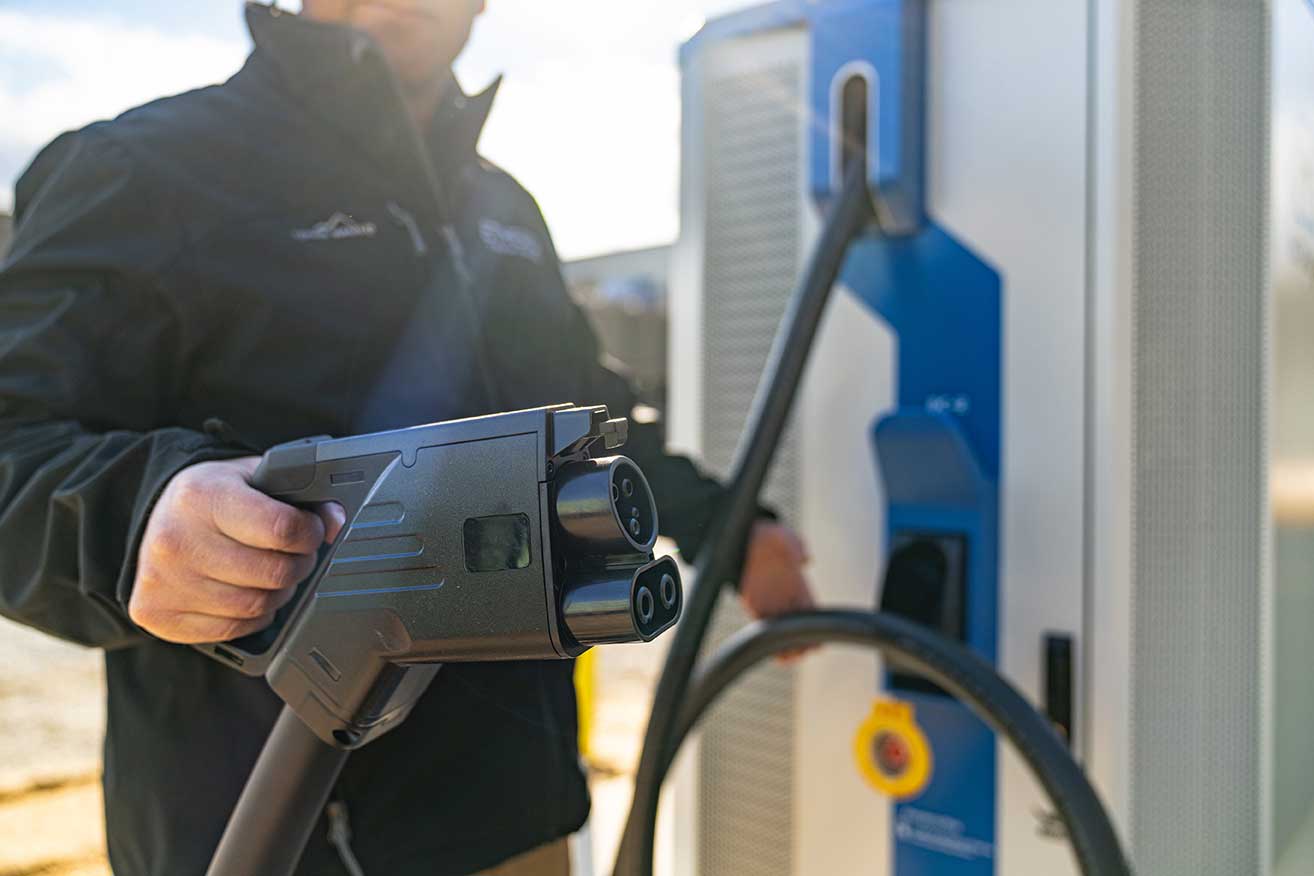
As the transition to electric vehicles (EVs) gains momentum, understanding the nuances of EV charging infrastructure is imperative for fleet owners to navigate set-up and logistics for maintaining a charged fleet. Interoperability, or the ability for various charging systems and vehicles to work together seamlessly, is key to maximizing efficiency and ensuring a smooth operation.
Infrastructure for zero-emissions trucks comes in several forms, each suited to different needs and scenarios. Charging for heavy-duty BEVs require significant amounts of energy, up to 350 kW per vehicle.
Hydrogen is quickly gaining ground as a superior option to battery charging due to its lightness and energy mass, making trucks like the FCEV ideal for long-distance, heavy commercial routes. Research is ongoing to develop an infrastructure that can safely and affordably store and transport hydrogen.
Both electric and hydrogen can efficiently charge ZEV trucks, in hours versus days, a common concern and misconception. No matter which vehicle option meets your operational requirements, there are key steps for fleet owners to implement adequate infrastructure to keep their fleet online:
- Assess Fleet Requirements: Understand the specific needs of your fleet, considering factors such as vehicle types, load data, average daily mileage, and turnaround times.
- Conduct Site Evaluations: Determine optimal locations for your charging equipment, mobile trailer usage, or depots based on vehicle routes and operational hubs.
- Plan: Work with consultants and dealer providers like ETHERO to design a system that meets current needs and allows for future expansion. ETHERO’s e-mobility solutions engineers can help you craft an initial 5-year plan that takes into account fleet additions, scrappage and sales, as well as electrification conversion and equipment requirements.
While public charging stations are not equipped for class 8 vehicles, proprietary charging infrastructure “behind the fence” on business premises offers an immediate solution, particularly in regulatory-driven markets like California, where timelines for diesel sales are tightening.
Today, infrastructure—or the lack thereof—is the biggest challenge facing fleet customers looking to transition to zero-tailpipe emission EV options. Range anxiety is real, exacerbated not just by a scarcity of electric charging depots, but also by uncertainty over whether a charger will function correctly with a customer’s truck once a station is located. The ideal future state will benefit from interoperability between charging providers, similar to the evolution of the tech industry and the early days of computer systems, where different hardware and software often couldn’t communicate effectively. Just as the tech industry standardized connectors like USB-C to improve interoperability, the EV industry must adopt similar standards to ensure a seamless experience.
ETHERO’s e-mobility solutions engineers partner with your local utilities to ensure the most efficient charging technologies as well as the opportunity to provide customized solutions tailored to specific fleet needs, such as optimizing charging locations based on route analysis.
Investing in the right charging infrastructure and ensuring its interoperability across different vehicle makes and models is essential for the efficient operation of an electric fleet. By understanding these aspects and working with the right partners, fleet owners can significantly enhance their operational efficiency and contribute to their sustainability goals. Universal interoperability will not only reduce costs and streamline processes for manufacturers but also accelerate the adoption of EVs by reducing range anxiety and making charging more accessible.